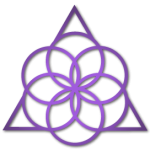Learning the basics of the Elemental forms takes repeated practice of simple movements over time. The Elementals are like the alphabet of the Bowspring language. Learning the most simple, elementary forms of alignment for a key part of the body like the foot or the hand is the beginning of the Bowspring curriculum. It takes a minimum of 3 weeks of regular practice—20 minutes per day—of a repeated movement to turn a new alignment into a neurological habit.
The first month of Bowspring practice is the most challenging since we are all confronted with our unconscious neurological patterns of posture and movement, which are commonly misaligned and the source of our physical aches and pains. Many times our default postural habits hold emotional memory of past traumas. This emotional memory can be triggered by elementary movements, as simple as keeping your arms straight while bending your knees in the Bowspring. What appears to be as simple as a kindergarten lesson, which all adults should be able to do, can be surprisingly difficult when it comes to learning the basics of the Bowspring. In the beginning of practicing the Elementals, feelings of incompetence and frustration are normal.
Since we introduced the Bowspring to Vital students in 2013, we have continually simplified the most basic classes to teach the method more effectively. The Elementals classes at Vital have become slower and simpler in an attempt to help both new and long-time students gain a greater sense of empowerment instead of discouragement with learning the details of the Bowspring! We have simplified the Elementals sequence to make it more relatable to common movements and forms that everyone recognizes. Despite the deconstruction of the method into its alphabetical parts, it still takes a month at least to gain competency in the most basic vocabulary of the Bowspring. Yet, a month or two is a relatively short period of time to begin to experience the profoundly transformative health benefits of this alignment which we can use every day for the rest of our lives!
One of the central lessons that we learned about teaching the Bowspring over the last 2 years is that the most elemental forms and basic actions need to be regularly practiced before focusing on complex sequences or intermediate poses. The more that we ground our practice in the elemental forms through repeated basic katas of the Bowspring, the more successful we will be in establishing a committed long-term Bowspring practice. The simpler we make our Bowspring curriculum, especially in our introductory classes, the more accessible we make our method to a broader audience.
The power of the Bowspring is found in doing the simplest position standing, sitting or lying down with uniform engagement on all sides of the body from tips of the toes and fingers to the top of the head. In order to learn how to make the uniform tone on all parts of the body simultaneously in the Bowspring, it takes slow repeated practice of the simplest forms like the Elemental Kata.

